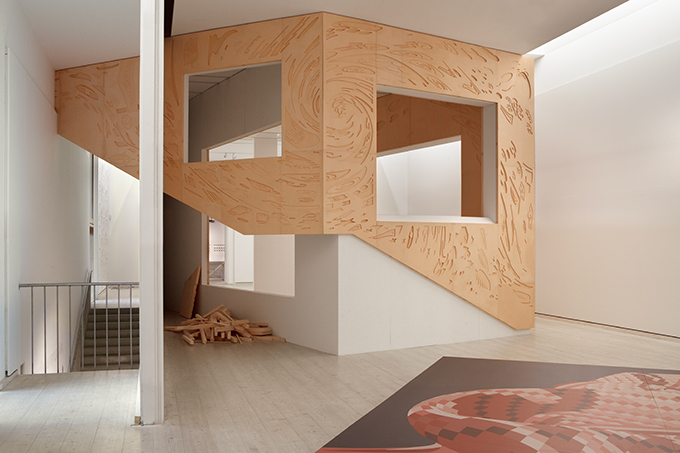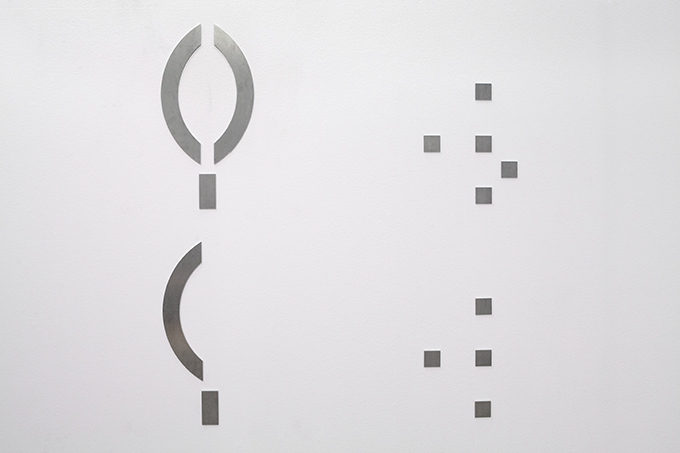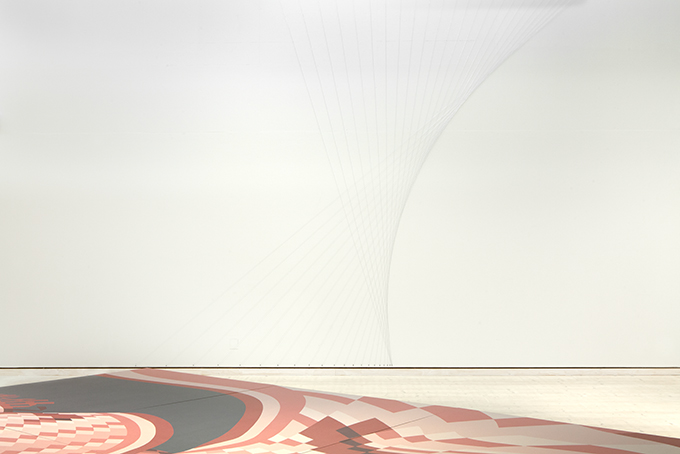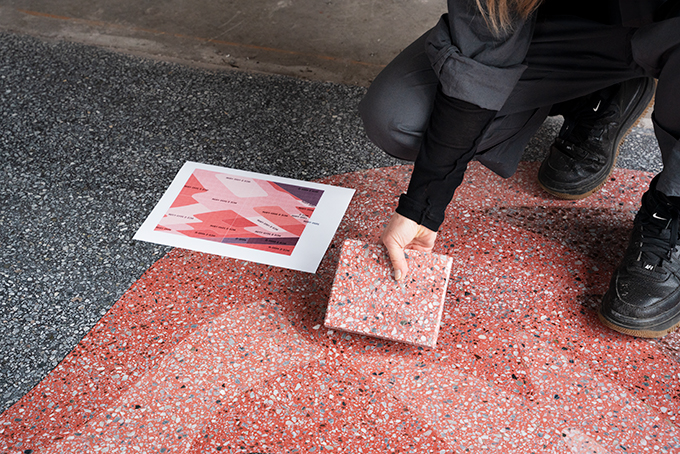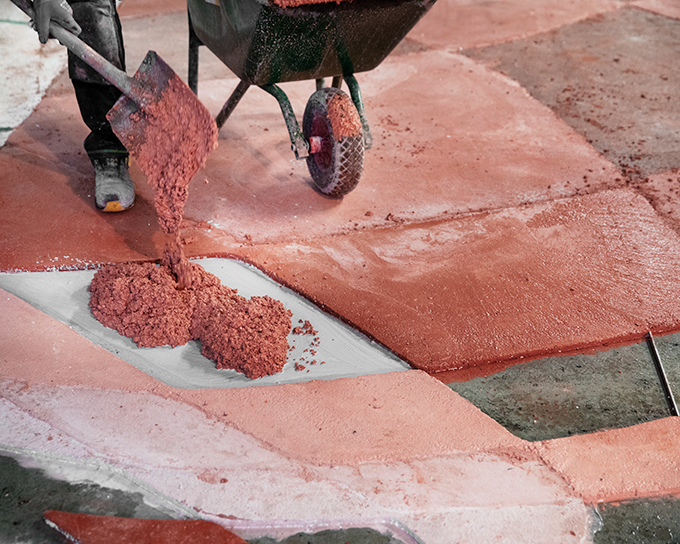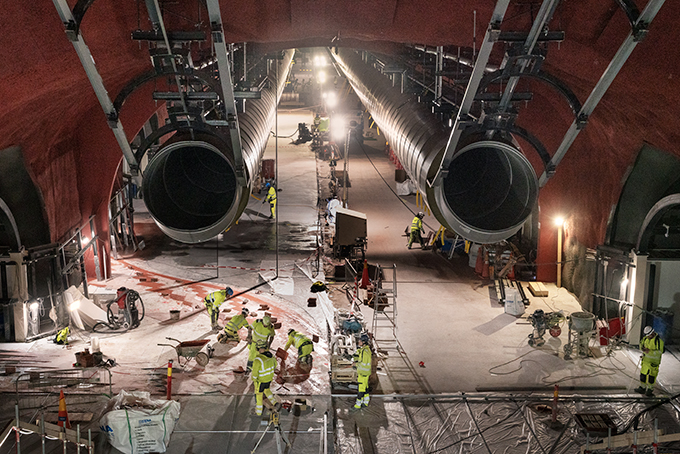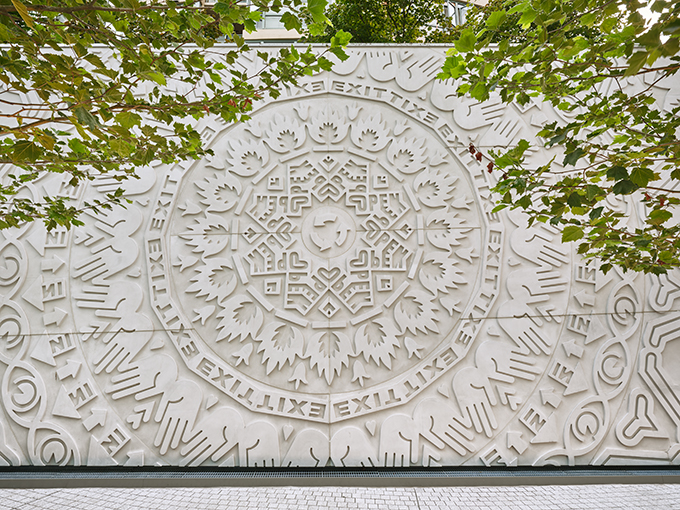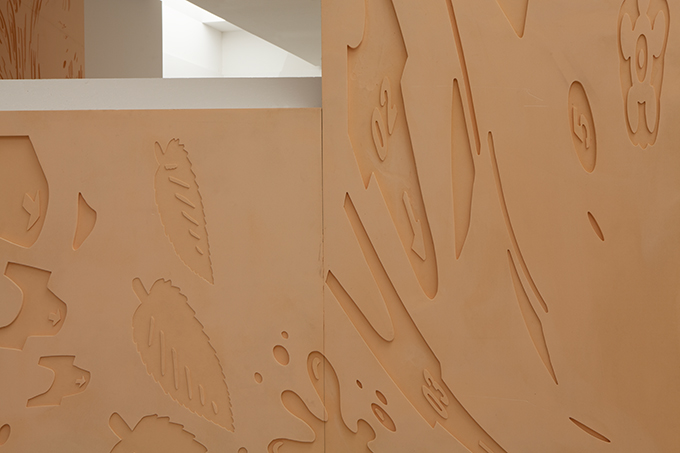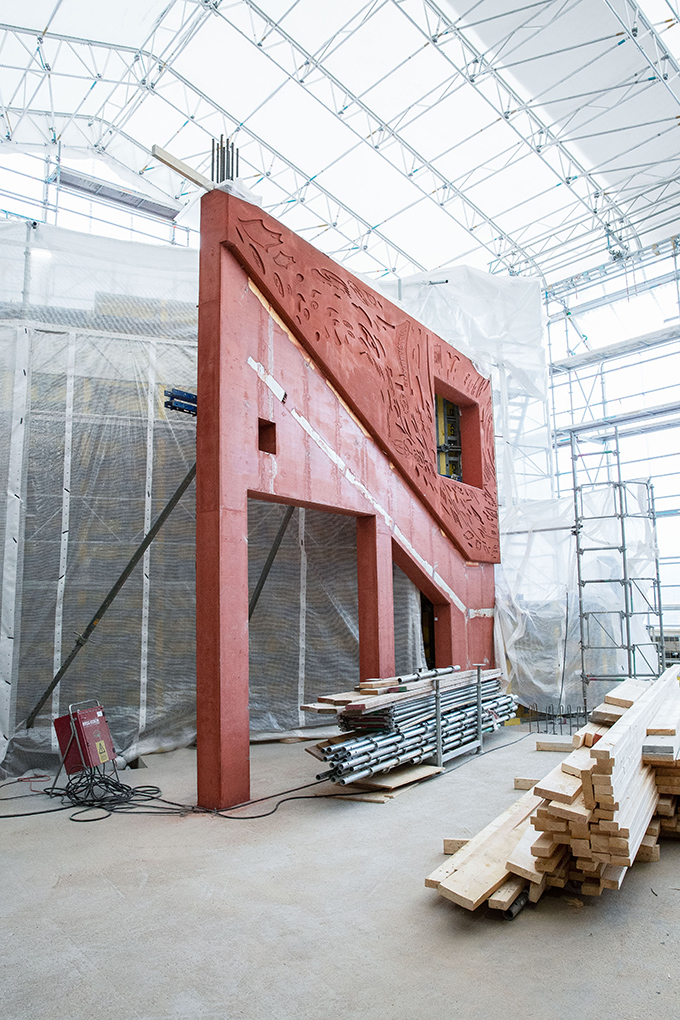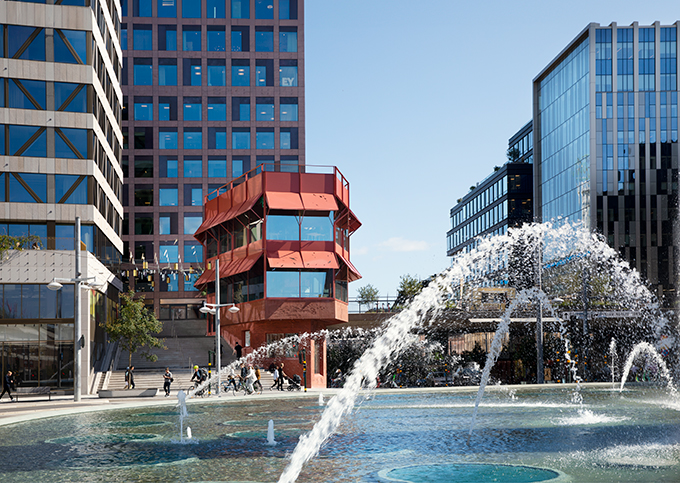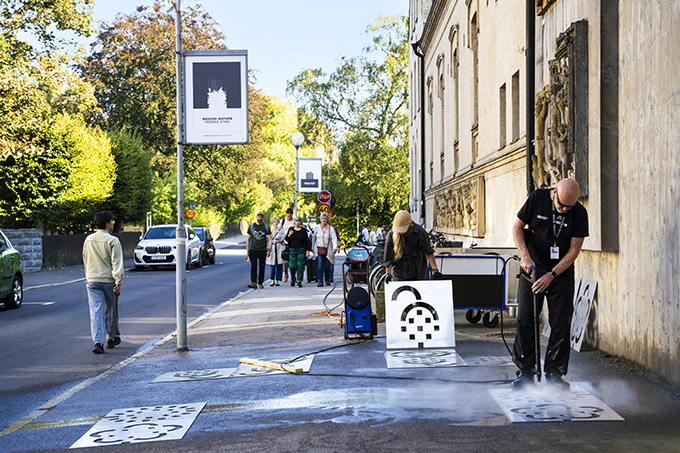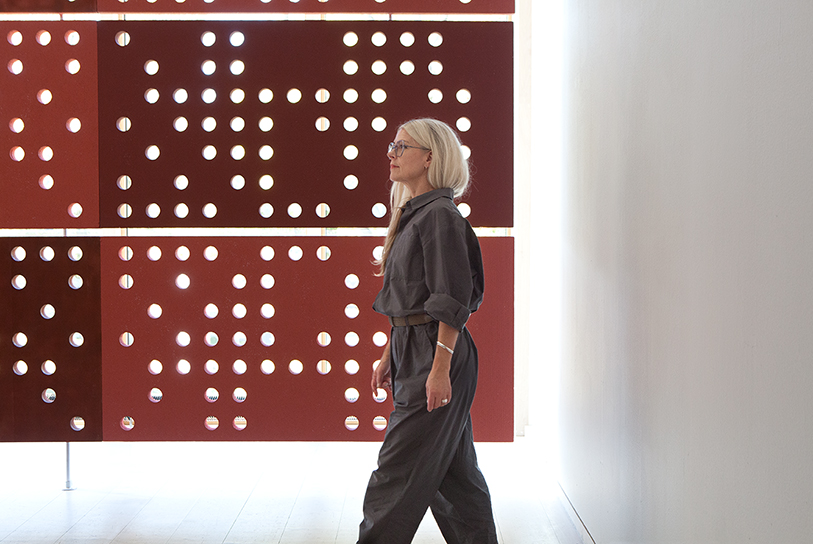- Open today 12–17
- Open today 12–17
WRINGWRENCHWHIRLWEAVE
Gunilla Klingberg
24 October 2024 – 20 April 2025
Vernissage October 24 at 17–20, inauguration at 18.30, free admission
The exhibition “WRINGWRENCHWHIRLWEAVE” highlights Gunilla Klingberg’s latest public art projects. Klingberg is one of Sweden’s most influential artists with several large-scale works on her CV. Among the latest are two much-discussed works for urban environments in Stockholm: “Virvelvind” (Whirlwind) (2021) for the façade of the Sergel Pavilion at the square, Sergels Torg, and “Den röda tråden” (The Red Thread) (2025) for entrance halls and waiting hall at the New Slussen Bus Terminal at Katarinaberget. Both works are rooted in the history and local connections of the place while the artistic expression transports them into the present. The exhibition presents physical and digital preparatory work for the projects. For the exhibition Klingberg has also created new works generated from the material she has saved during her processes.
The 140m2 work “Virvelvind” (Whirlwind) is fully integrated into the façade of the Sergel Pavilion and was created by order of Vasakronan, and in close cooperation with the architectural firm Marge Arkitekter. The Pavilion houses a restaurant and bar with a view over Sergels Torg. Klingberg’s work depicts clues about events at and around the square, one of Sweden’s most well-known public spaces. Traces of various activities seem to have been blown in by a whirlwind, leaving impressions in the red pigmented concrete façade and in the cut-out sheet metal window frames. We can find banners, placards, #metoo, queue tickets, badges, footballs, confetti, balloons, paper bags and spilled coffee – symbols that all bear a story about the place, about the square as a meeting point to demonstrate, to pay tribute to someone or to celebrate something together.
“Den röda tråden (Katarina)” (The Red Thread, Katarina) is Klingberg’s largest work to date. The work is included in one of Sweden’s most controversial infrastructure projects. In the sketch proposal, the artist’s starting point is the significant textile industry that was located around Slussen in the late 1800s. The project’s focus on labour history and industrialisation acts as a common thread through the various parts of the work. A patterned silk shawl, woven by one of the women who toiled in the workshops, is the departure point for the design of the waiting hall’s 4,500m2 terrazzo floor. In Klingberg’s digital sketches, the shawl appears to have been thrown out over the floor and then embedded in seven different red nuances. Next year, when we can move through the huge space, we will experience the constant changes in the work.
Those travelling to or from the Triangeln railway station in Malmö are perhaps familiar with Gunilla Klingberg’s floor in patterned concrete, decorative surveillance sphere, artificial sun and flower formations in steel. The four works have the collective title “Vardagslivets mönster” (Patterns of Everyday Life) and were unveiled in 2010.
Gunilla Klingberg (born in 1966) has produced public art in Sweden, Norway, Canada and the USA. Klingberg studied graphic design at the Berghs School of Communication and sculpture at the University of Arts, Crafts and Design. She has had solo exhibitions and participated in art biennials in several European countries, South Korea and the USA. She was recently adjunct professor at the Royal Institute of Art and has been a member of the Royal Academy of Fine Arts since 2019. In the fall of 2025, she holds a residency scholarship at ISCP in New York through the Swedish Arts Grants Committee. Klingberg lives and works in Stockholm and is represented at, among others, Moderna Museet and Malmö Art Museum.
The exhibition is presented with the support of Vasakronan.
Thanks to Herrljunga Terrazzo
Image: Gunilla Klingberg, The Red Thread (Katarina), 2024. Photo: Emma Krantz / Skissernas Museum
Guided Tours
Guided tours every Saturday (in Swedish) and Sunday (in English) at 12.30 p.m
See calendar
